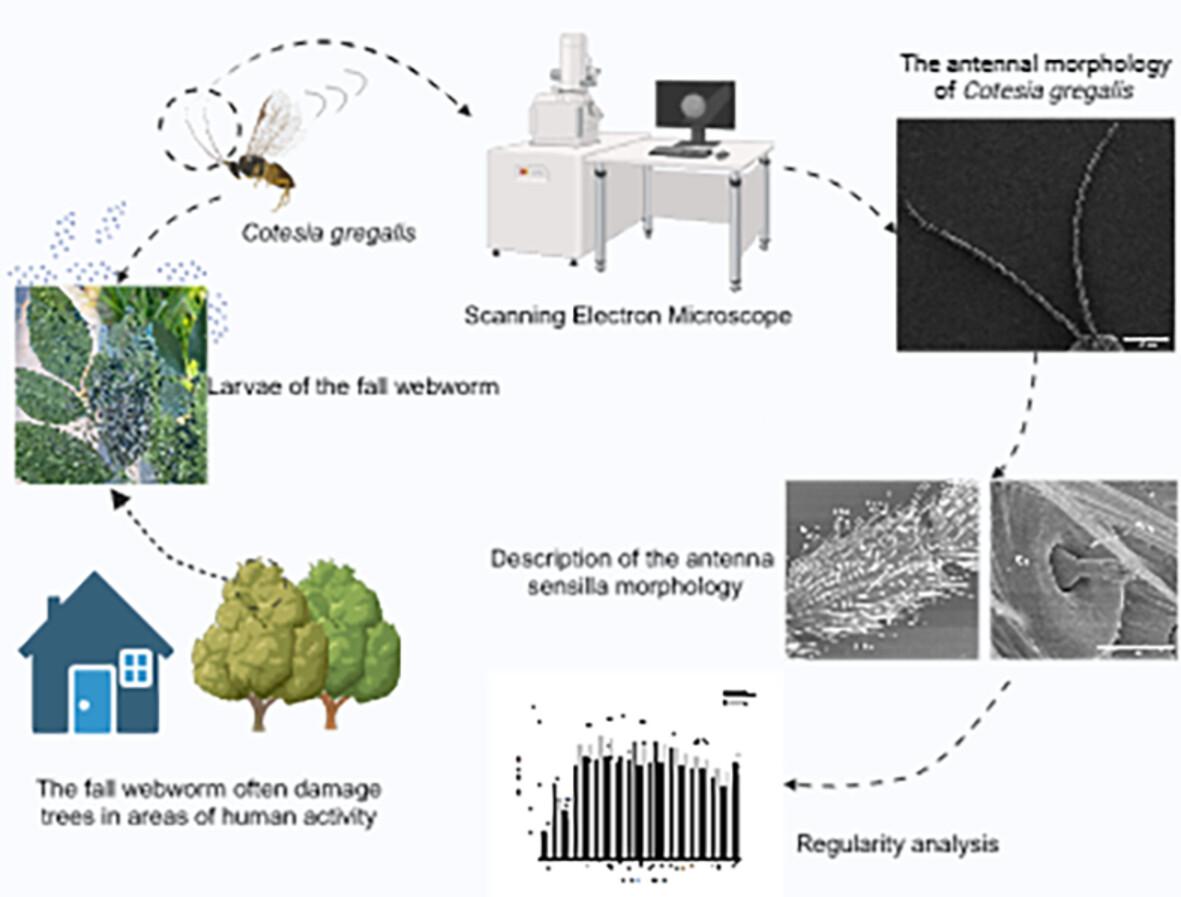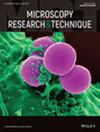Ultrastructure and distribution of antennal sensilla of parasitic wasp, Cotesia gregalis (Hymenoptera: Braconidae)
Abstract
Cotesia gregalis Yang et Wei (Hymenoptera: Braconidae) is a gregarious koinobiont endoparasitic wasp attacking the larvae of fall webworm, Hyphantria cunea, an important invasive insect pest in China. To better understand the parasitic wasps' mating and parasitic behaviors, we examined the morphology of the antennae of adult C. gregalis, as well as the type, number, and distribution of antennal sensilla, via scanning electron microscopy. The antennae of female and male C. gregalis are filiform and comprise a scape, pedicel, and 16 flagellomeres. The female antennae are significantly shorter than those of male. A total of nine morphological types of antennal sensilla (mechanoreceptor and chemoreceptor) are presented in both sexes, including four mechanoreceptors (sensilla chaetica [two subtypes], sensilla trichodea and Böhm bristles); five chemoreceptors (sensilla basiconica [two subtypes], sensilla placodea, sensilla styloconica, and sensilla coelocapitula). There is no difference in the type and distribution of antennal sensilla between males and females, but the number and length of some antennal sensilla show sexual dimorphism. The functional morphology of the sensilla of C. gregalis is discussed by comparison with other parasitic wasps. These findings provide foundation for further research on the chemical communication and host localization mechanisms of C. gregalis.
Research Highlights
- The first report of morphology and distribution pattern of the antennal sensilla in C. gregalis is discussed.
- A total of seven main types and nine antennal sensilla subtypes are observed in male and female C. gregalis.
- The type and distribution of antennal sensilla in males and females are identical; however, the number and length of certain antennal sensilla show sexual dimorphism.


 求助内容:
求助内容: 应助结果提醒方式:
应助结果提醒方式:


